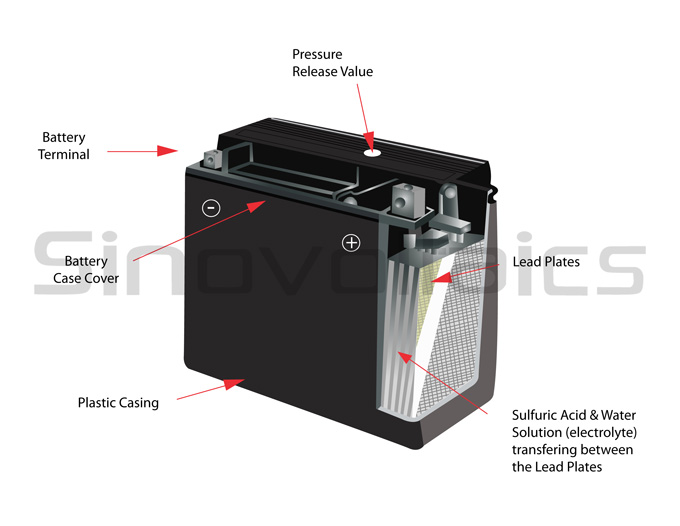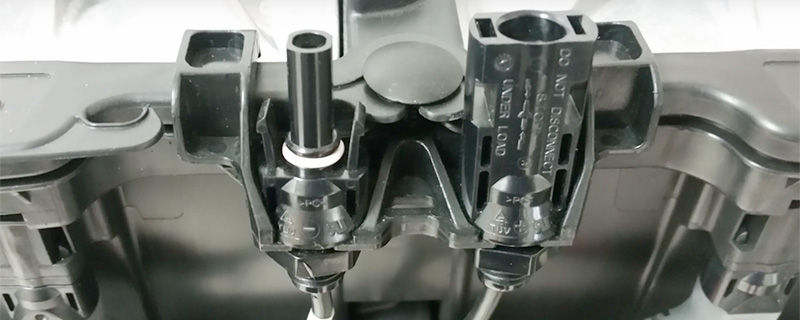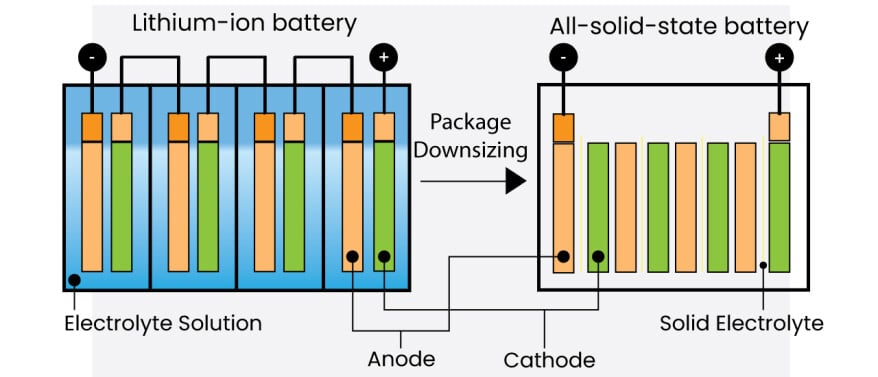In part 1 of our series about solar energy storage technologies, we introduced some of the major existing systems and technology types to store solar energy, such as flywheels, pumped hydro systems and, of course, batteries.
Even though pumped hydro accounts for over 99% of the total storage capacity installed worldwide, due to special geographic requirements and comparably high set up costs, it’s only practical as storage technology for ideally located, large PV installations.
For mid- and small-size systems, batteries are clearly the major choice, with decreasing costs in recent years gaining increasingly more popularity in the solar industry, having converted into THE industry’s hot topic, especially among fans of off-grid solar .
But the battery isn’t just a battery, there a multiple battery technologies available and the question is: which suits best for your PV system?
In the following parts of this series, we will look at the various battery technologies and their respective technology advantages and disadvantages, starting in part 2 with an introduction to Sealed Lead-Acid and Non-Sealed Lead-Acid Batteries and its various sub-types.
Difference between Starter Batteries and Deep-Cycle Batteries
Generally, there are two different design types of batteries serving different purposes:
starter batteries, which provide instant energy, and deep-cycle batteries, which provide long-term energy.
Starter batteries are built to discharge only a small percentage of their capacity – just enough for a quick and short energy burst to start for example a car engine (car battery). Designed as instant energy providers, starter batteries are unsuitable for long-term usage with electrical appliances.
Frequent cycles, using most of its capacity, would quickly end the lifetime of a starter battery. Thus, don’t try to use a car battery with your solar PV systems.
Contrary to starter batteries, deep cycle batteries give stored energy out over time and can – providing proper battery sizing – also be used as starter batteries. Deep-cycle batteries are designed to run and survive multiple discharge cycles, therefore being best for applications with regular discharges, such as off-grid solar systems.
The lifespan-optimal correlation between depth of discharge: and the number of total cycles is achieved by cycling a deep-cycle battery not further down than 45%-50% discharge before re-charging.
How are these functional differences between starter and deep-cycle batteries achieved?
The key lies in the battery manufacturing process, during which the length, thickness, structure as well as electrochemical composition of the battery plates (electrodes) and electrolyte mix is varied. In terms of lead-acid batteries, the size of the plates and electrolyte quantity they are manufactured with basically determine how much charge it can store.
Lead-Acid Batteries: construction and functioning
Lead-Acid Batteries, also simply abbreviated as PbA batteries, are the oldest type of rechargeable battery technologies available, and had already been invented in the mid-19th century.
The cells of standard lead-acid batteries come with a nominal voltage of 2 Volts. They usually consist of an acid-proof casing within which there are two, flat lead battery plates, one serving as the positive electrode, covered with lead dioxide paste, and the other as the negative electrode, which is made of sponge lead. The electrolyte in which the battery plates are submerged is a solution of water and sulfuric acid (H2SO4).
Once connected to a load and thus closing the electric circuit, an electro-chemical reaction between the electrolyte and the battery plates with moving electrons takes place, producing the electricity to power the connected load. During this discharge by connecting a load, the battery plates undergo a process called sulfation, meaning that the plates are increasingly coated by lead sulfate (PbSO4), while the sulfuric acid electrolyte is more and more diluted, with the primary remains being water.
Advantages and Disadvantages
What are the advantages of lead-acid batteries? Compared to other battery types, lead-acid batteries offer a good cost: performance ratio as they are comparatively cheap, have a low rate of self-discharge/ month of only 5% (based on normal room temperature), and provide reliable performance, especially in terms of high overcharge tolerance.
However, in face of those advantages, there are is a range of disadvantages with lead-acid batteries, primarily its lower cycle life and the extra maintenance requirements. As the water level drops during this process, regular checking of the water level and adding of water is necessary.
Moreover, lead-acid batteries have a comparably low specific energy density of only 30-50 Wh/kg, a high volume-to-mass ratio, and – with 12 hours on average – have longer charging times than other battery types. At discharged state, they are also sensitive against cold temperatures, literally freezing the electrolyte.
Another disadvantage to consider is that PbA batteries are on average much heavier than standard Lithium-ion or Nickel-based batteries, which may increase the costs of installation and replacement.
Despite these disadvantages and due to its established history, related experience, and the comparably good cost: performance ratio, a large chunk of deep-cycle batteries commercially sold worldwide are lead-acid batteries with a total installed capacity standing at over 70 MW.
It is also the most preferred battery technology used with solar PV systems.

Battery diagram – lead-acid battery
Lead-Acid Battery types
There are 2 main types of lead-acid batteries commonly used with solar PV systems:
- Flooded (Wet Cell) Batteries
- Valve-Regulated Lead-Acid (VRLA)
Flooded batteries fall into the category of non-sealed, non-maintenance free lead-acid batteries, while VRLA batteries belong to the category of sealed lead-acid batteries, not requiring maintenance.
Flooded (Wet Cell) Batteries
Flooded, or also: Wet Cell, batteries are the most popular type because they offer the best cost: performance ratio. This ratio however comes at the expense of a higher susceptibility to spilling and the requirement of good ventilation conditions and regular maintenance so to ensure the long-term functionality of the battery.
Valve-Regulated Lead-Acid (VRLA) / Sealed Lead-Acid Batteries
VRLA batteries are commonly known as sealed lead-acid batteries or maintenance-free batteries. As the term ‘valve regulated’ implies, these batteries have a safety valve, which allows the release of gases produced.
VRLA have comparably less capacity than flooded batteries and can be distinguished into two types:
- Absorbed Glass Mat (AGM)
- Gelled Electrolyte(Gel Cell)
Absorbed Glass Mat (AGM) batteries
AGM Batteries use a fibre Boron-Silicate glass separator which absorbs the electrolyte. AGM batteries are spill proof, charge fast, work well under cold temperature and can even be used to jump start for all types of cars. However, they are more sensitive to leaks from the liquid acid electrolyte they use.
Gelled Electrolyte(Gel Cell) batteries
Gel Cell, or simply: gel batteries contain acid in a gel, jelly-like form, thus breakages of a gel battery do not result in leakage. Gel batteries are spill proof, extremely robust, and versatile. These types of batteries produce few fumes and can be used in places without much ventilation, however, they are sensitive to overcharge which can lead to gas voids sticking to the plates, reducing the overall performance of the battery. Thus, a good charge controller should be used with gel batteries.
Comparatively, they are best suited for deep discharge as they are more acid-starved, protecting plates better compared to AGM batteries. AGM batteries are more compatible where a high current is required.
The decision for the optimal battery type for your solar PV off-grid system depends on several factors, such as your geographic location, total expected cycles, and of course costs. If the latter is not an issue, gel batteries would with the selection of a good charge controller be a good choice in many cases.
TO OUR READERS:
Curious question to our off-grid PV system owning readers: which type of lead-acid battery do you use for your solar off-grid system and how does it perform so far? Please contact us!
Sources:





